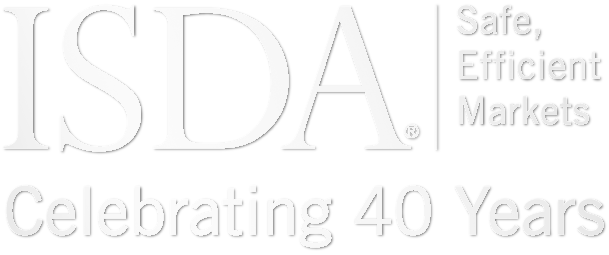
ISDA Chief Executive Officer Scott O'Malia offers informal comments on important OTC derivatives issues in derivatiViews, reflecting ISDA's long-held commitment to making the market safer and more efficient.
By the end of this year, the first phase of the US Securities and Exchange Commission’s (SEC) Treasury clearing mandate is scheduled to come into force, affecting users of US Treasury securities all over the world. It’s difficult to overstate how big a deal this is, and a huge amount of work is underway to implement the new requirements. However, several legal, operational and capital issues crucial to implementation must be resolved before the new requirements take effect – and time is running out. With the start of a new administration in the US, we hope the deadlines will be quickly revisited to provide sufficient time to tackle the various implementation challenges.
Under the rules, finalized by the SEC in December 2023, clearing agencies will need to adjust their policies and procedures to require their members to clear certain cash US Treasury securities by December 31 this year, with repos following in a second phase six months later. This will include trades conducted by those member firms or their branches with any counterparty, including those based outside the US, meaning the number of in-scope entities around the world will likely run into the thousands.
The industry is working hard to meet the deadlines, but a lot remains unknown. While the Fixed Income Clearing Corporation (FICCC) – historically the only clearing house for US Treasury transactions – released proposed changes to its rule book last year, proposals for CME Group’s new clearing offering have only recently been published, and market participants are in the early stages of digesting them. ICE has also announced it will launch a US Treasury clearing service. To assist the market, ISDA has published a comparison of various clearing models for US Treasury transactions and derivatives, which we will update as new models emerge.
Alongside this work, the Securities Industry and Financial Markets Association (SIFMA) is leading a group (which also includes ISDA) that is making good headway in developing appropriate documentation. However, this documentation has to reflect the clearing models and rule books that are still under development, as well as client segregation solutions, some of which have yet to be finalized or tested. Dealers will then need to execute the new documents with thousands of counterparties, as well as obtain netting opinions to ensure efficient capital treatment. We know from the implementation of the margin rules for non-cleared derivatives that this is a considerable amount of work that takes time.
Impediments also exist in the regulatory and capital framework that need to be ironed out. For example, FICC and CME Group offer cross-margining at the clearing-member level to enable initial margin efficiencies from offsetting trades in a portfolio of cash, repo and futures transactions, but recognition of cross-margining at the client level is still pending. Moreover, there is no recognition in the revised US capital framework for corresponding cross-netting across derivatives and repo trades. Unless this is resolved, it will constrain bank balance sheets and limit their ability to offer client clearing.
Likewise, the US supplementary leverage ratio (SLR) in its current form may restrict the ability of banks to participate in the US Treasury market. As we pointed out to US prudential regulators last year, we believe targeted reforms to the SLR framework are necessary to facilitate participation by banks in US Treasury markets, including clearing US Treasury transactions for clients.
This is on top of continued uncertainty about the final shape of the US Basel III endgame rules and the surcharge for US global systemically important banks (G-SIBs). Based on analysis conducted by ISDA and SIFMA last year, those two sets of proposals would increase capital for client clearing businesses at US G-SIBs by an eye-popping 80% – an unnecessary tax on clearing that is out of whack with risk and would bring the economic viability of that business into question.
We think now is the time to revisit all these issues, with the aim of maintaining deep, liquid markets and ensuring the continued smooth functioning and resilience of the US Treasury market. Having legal and operational certainty on pending implementation issues, as well as clarity on the related capital treatment, is a fundamental prerequisite for any successful US Treasury clearing mandate. Given all the issues that need to be resolved, it’s difficult to see how Treasury clearing can be achieved safely and efficiently within the current time frame. We need to rethink the deadlines.
Latest
Response on Commodity Derivatives Markets
On April 22, ISDA and FIA submitted a joint response to the European Commission’s (EC) consultation on the functioning of commodity derivatives markets and certain aspects relating to spot energy markets. In addition to questions on position management, reporting and...
Episode 50: The Value of Derivatives
A new report from ISDA shows that companies all over the world use derivatives to alleviate uncertainty, transfer risk and enhance profitability. ISDA discusses the findings with Boston Consulting Group’s Roy Choudhury. Please view this page via Chrome to access...
ISDA/IIF Response to EC Market Risk Consultation
On February 22, ISDA and the Institute of International Finance (IIF) submitted a joint response to the European Commission’s (EC) consultation on the application of the market risk prudential framework. The associations believe the capital framework should be risk-appropriate and...
ISDA Submits Letter on Environmental Credits
On April 15, ISDA submitted a response to the Financial Accounting Standards Board’s (FASB) consultation on environmental credits and environmental credit obligations. The response supports the FASB’s overall proposals to establish clear and consistent accounting guidance for environmental credits, but...


